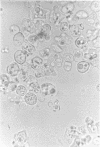Abstract
Clinical yeast isolates representing alpha-glucoside-deficient variants of Candida tropicalis, C. lusitaniae, atypical C. albicans, and Saccharomyces cerevisiae were characterized. Additional physiological tests, including cellobiose fermentation, rhamnose assimilation, and triphenyl tetrazolium chloride reduction, are recommended for the detection and presumptive identification of uncommon Candida spp. in the clinical laboratory.
Full text
PDF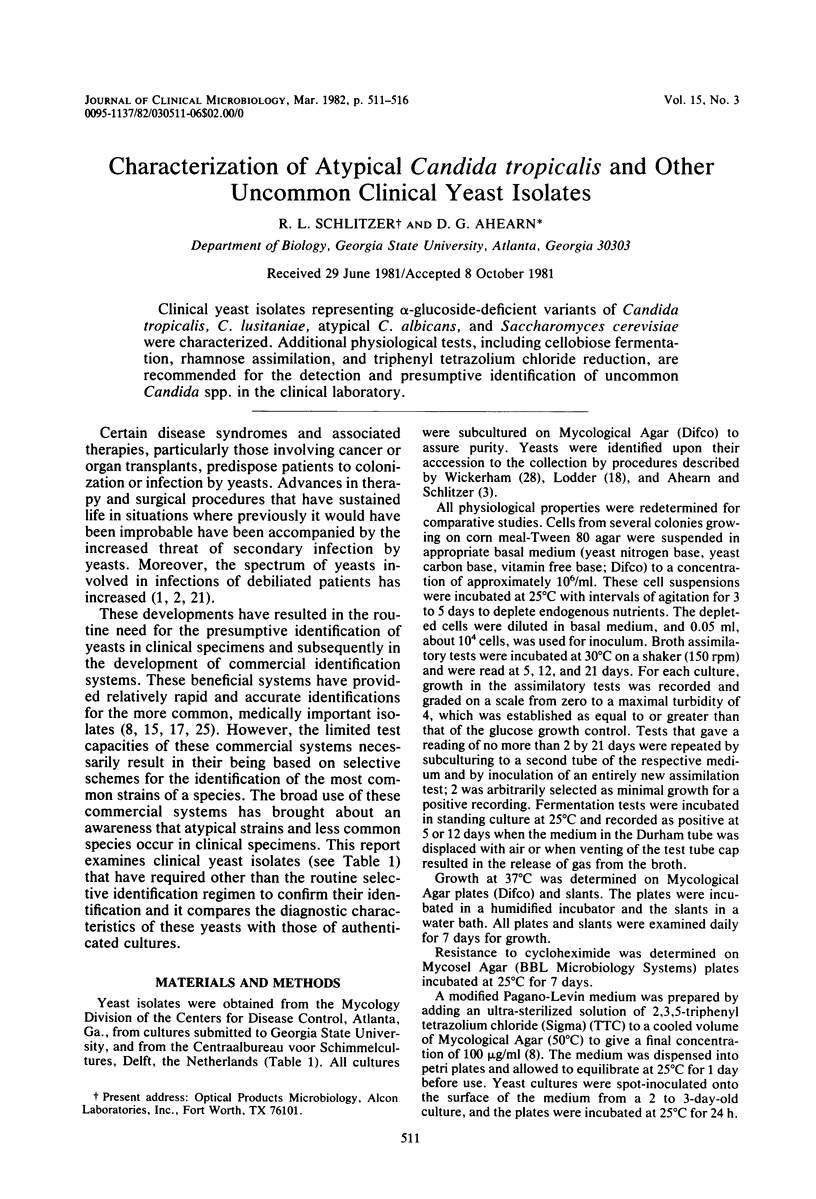
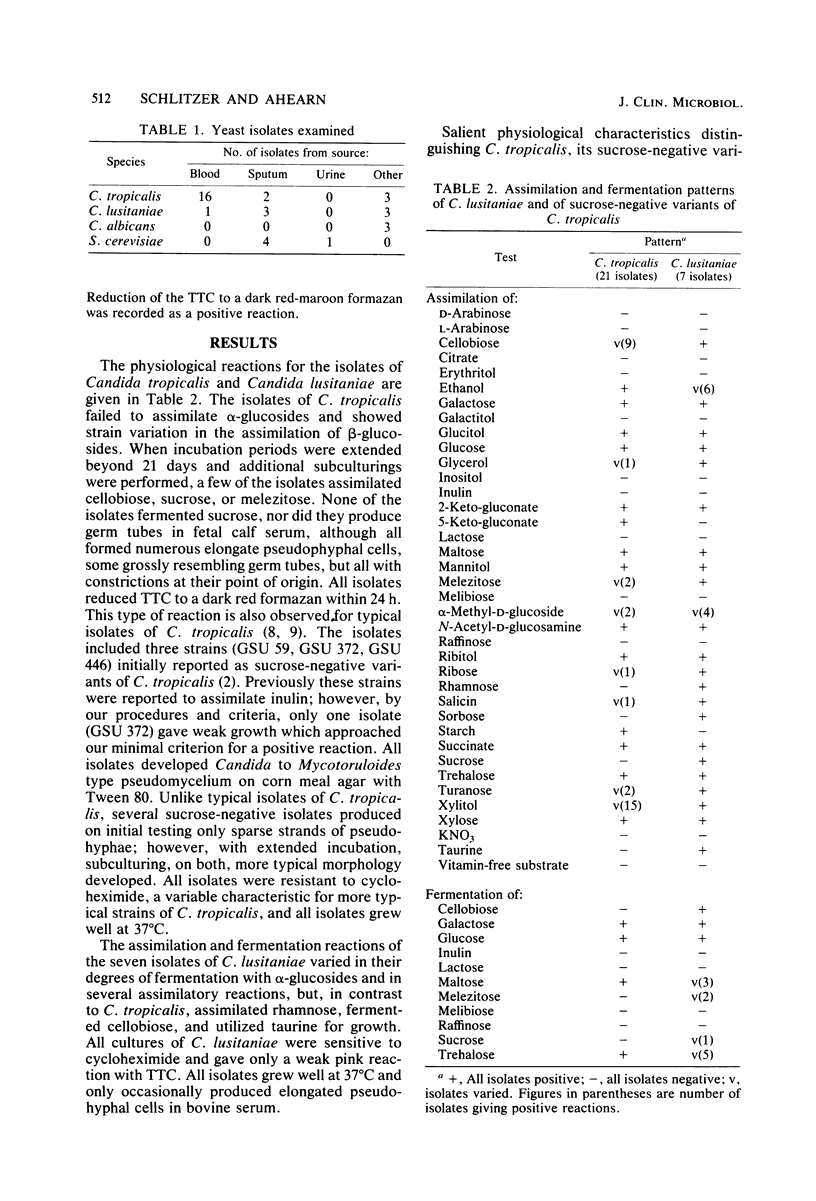
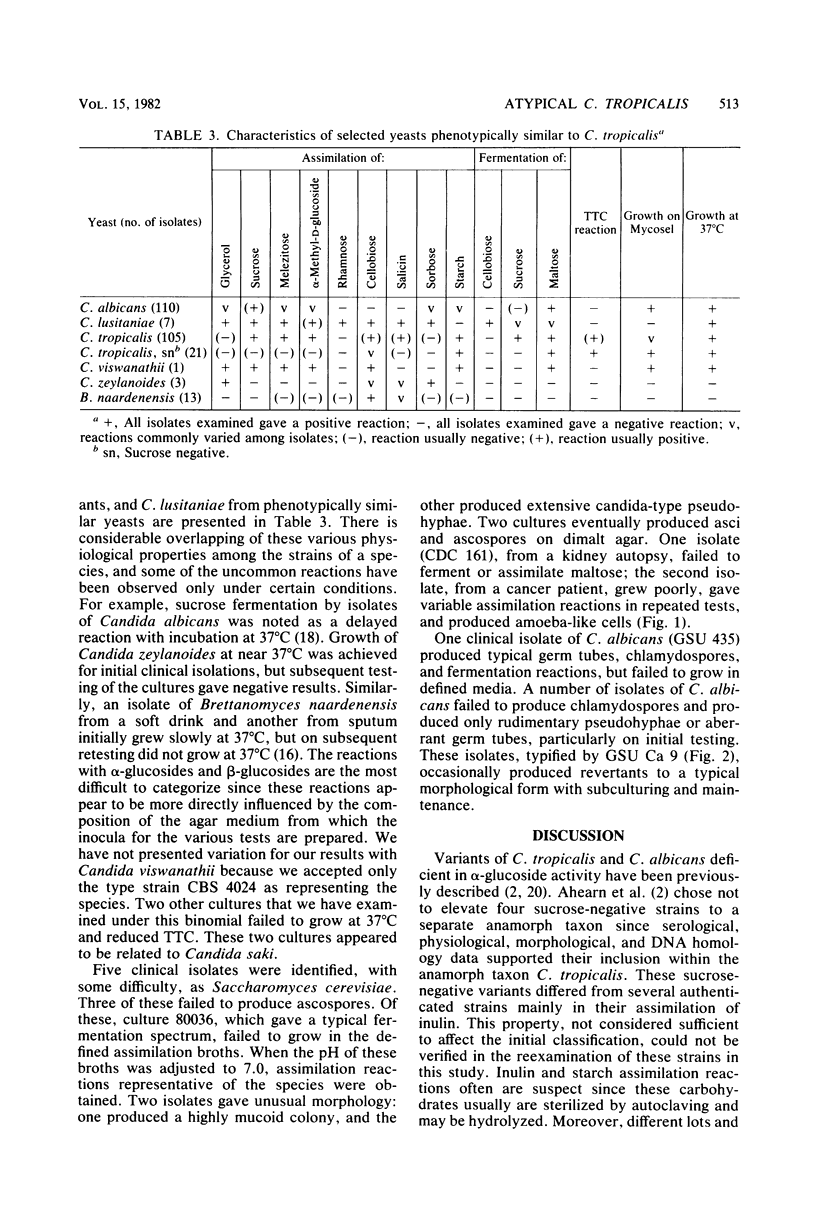
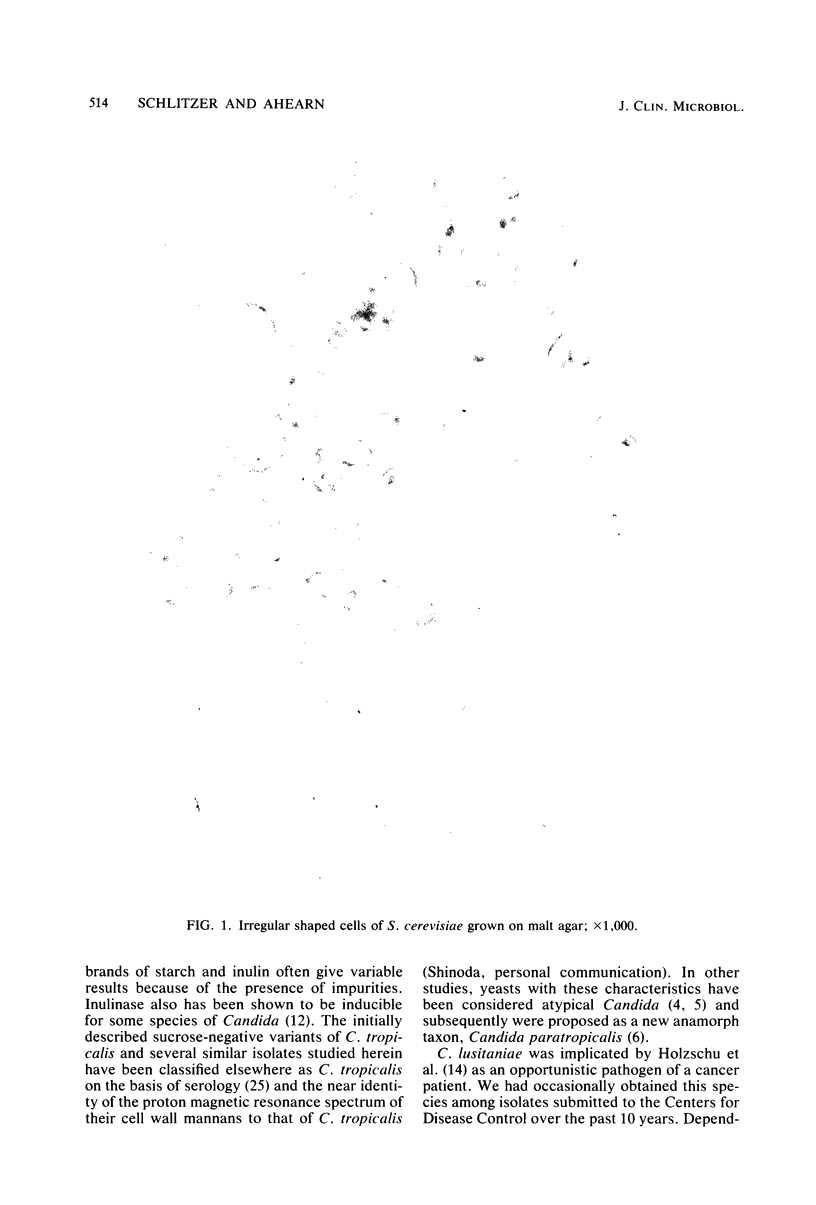
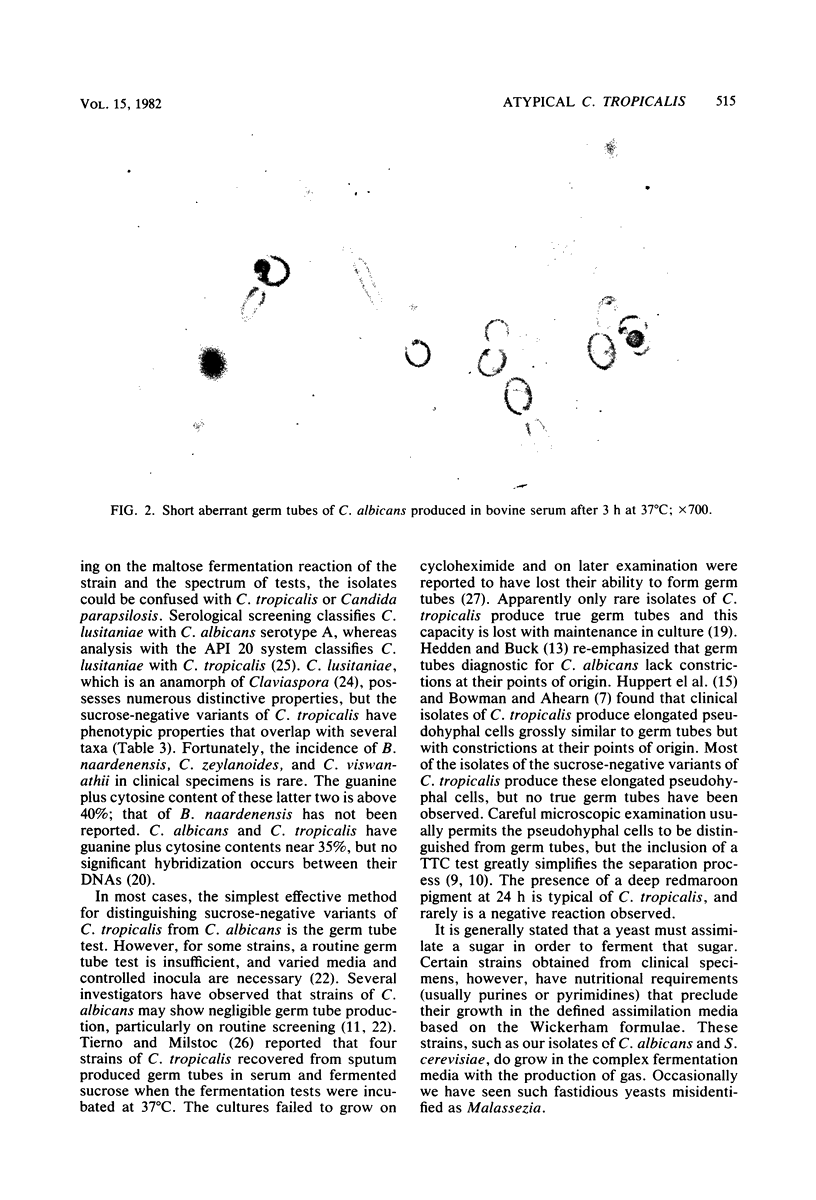
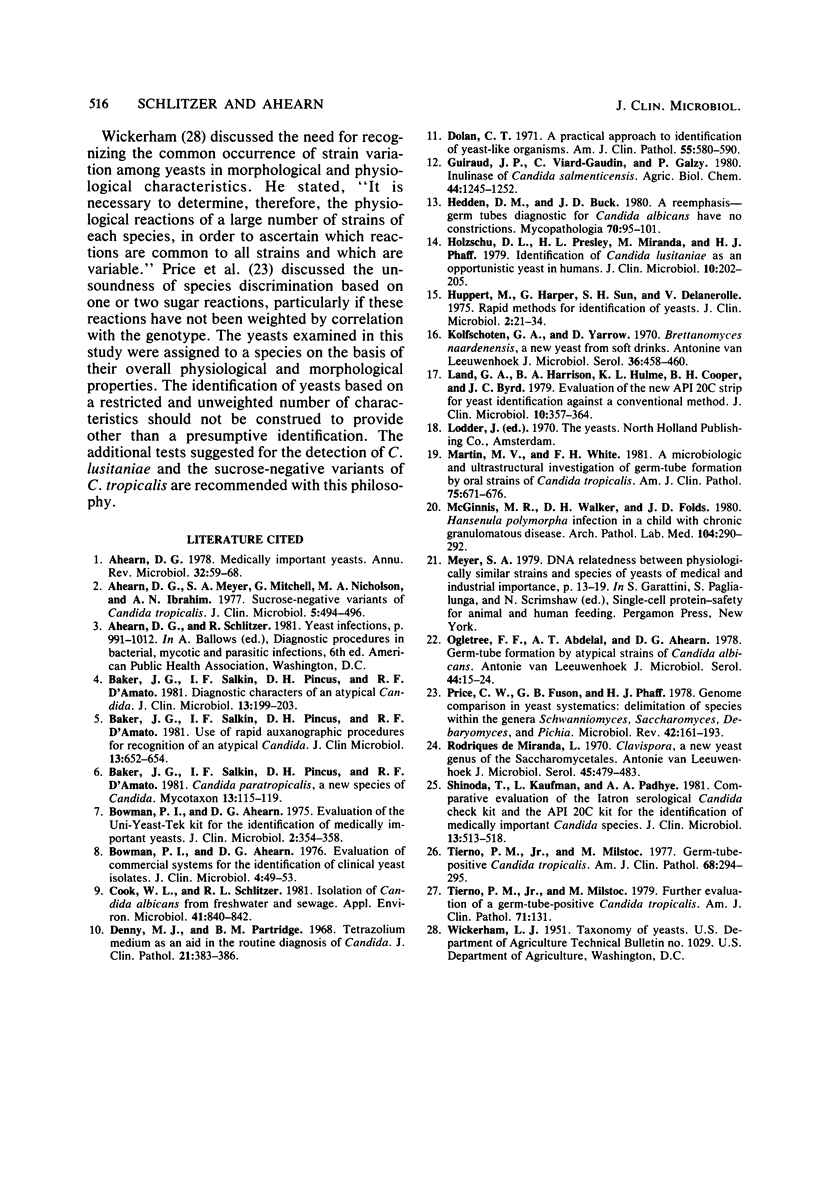
Images in this article
Selected References
These references are in PubMed. This may not be the complete list of references from this article.
- Ahearn D. G. Medically important yeasts. Annu Rev Microbiol. 1978;32:59–68. doi: 10.1146/annurev.mi.32.100178.000423. [DOI] [PubMed] [Google Scholar]
- Ahearn D. G., Meyer S. A., Mitchell G., Nicholson M. A., Ibrahim A. I. Sucrose-negative variants of Candida tropicalis. J Clin Microbiol. 1977 Apr;5(4):494–496. doi: 10.1128/jcm.5.4.494-496.1977. [DOI] [PMC free article] [PubMed] [Google Scholar]
- Baker J. G., Salkin I. F., Pincus D. H., D'Amato R. F. Diagnostic characters of an atypical Candida. J Clin Microbiol. 1981 Jan;13(1):199–203. doi: 10.1128/jcm.13.1.199-203.1981. [DOI] [PMC free article] [PubMed] [Google Scholar]
- Baker J. G., Salkin I. F., Pincus D. H., D'Amato R. F. Use of rapid auxanographic procedures for recognition of an atypical Candida. J Clin Microbiol. 1981 Apr;13(4):652–654. doi: 10.1128/jcm.13.4.652-654.1981. [DOI] [PMC free article] [PubMed] [Google Scholar]
- Bowman P. I., Ahearn D. G. Evaluation of commercial systems for the identification of clinical yeast isolates. J Clin Microbiol. 1976 Jul;4(1):49–53. doi: 10.1128/jcm.4.1.49-53.1976. [DOI] [PMC free article] [PubMed] [Google Scholar]
- Bowman P. I., Ahearn D. G. Evaluation of the Uni-Yeast-Tek kit for the identification of medically important yeasts. J Clin Microbiol. 1975 Oct;2(4):354–358. doi: 10.1128/jcm.2.4.354-358.1975. [DOI] [PMC free article] [PubMed] [Google Scholar]
- Cook W. L., Schlitzer R. L. Isolation of Candida albicans from freshwater and sewage. Appl Environ Microbiol. 1981 Mar;41(3):840–842. doi: 10.1128/aem.41.3.840-842.1981. [DOI] [PMC free article] [PubMed] [Google Scholar]
- Denny M. J., Partridge B. M. Tetrazolium medium as an aid in the routine diagnosis in Candida. J Clin Pathol. 1968 May;21(3):383–386. doi: 10.1136/jcp.21.3.383. [DOI] [PMC free article] [PubMed] [Google Scholar]
- Dolan C. T. A practical approach to identification of yeast-like organisms. Am J Clin Pathol. 1971 May;55(5):580–590. doi: 10.1093/ajcp/55.5.580. [DOI] [PubMed] [Google Scholar]
- Hedden D. M., Buck J. D. A reemphasis-Germ tubes diagnostic for Candida albicans have no constrictions. Mycopathologia. 1980 Mar 17;70(2):95–101. doi: 10.1007/BF00443074. [DOI] [PubMed] [Google Scholar]
- Holzschu D. L., Presley H. L., Miranda M., Phaff H. J. Identification of Candida lusitaniae as an opportunistic yeast in humans. J Clin Microbiol. 1979 Aug;10(2):202–205. doi: 10.1128/jcm.10.2.202-205.1979. [DOI] [PMC free article] [PubMed] [Google Scholar]
- Huppert M., Harper G., Sun S. H., Delanerolle V. Rapid methods for identification of yeasts. J Clin Microbiol. 1975 Jul;2(1):21–34. doi: 10.1128/jcm.2.1.21-34.1975. [DOI] [PMC free article] [PubMed] [Google Scholar]
- Kolfschoten G. A., Yarrow D. Brettanomyces naardenensis, a new yeast from soft drinks. Antonie Van Leeuwenhoek. 1970;36(3):458–460. doi: 10.1007/BF02069047. [DOI] [PubMed] [Google Scholar]
- Land G. A., Harrison B. A., Hulme K. L., Cooper B. H., Byrd J. C. Evaluation of the new API 20C strip for yeast identification against a conventional method. J Clin Microbiol. 1979 Sep;10(3):357–364. doi: 10.1128/jcm.10.3.357-364.1979. [DOI] [PMC free article] [PubMed] [Google Scholar]
- Lee S. S., Pang J., Yung A. An automated antimicrobial susceptibility system versus the Kirby-Bauer disk diffusion test for antimicrobial susceptibility. Am J Clin Pathol. 1979 Jan;71(1):131–133. doi: 10.1093/ajcp/71.1.131a. [DOI] [PubMed] [Google Scholar]
- Martin M. V., White F. H. A microbiologic and ultrastructural investigation of germ-tube formation by oral strains of Candida tropicalis. Am J Clin Pathol. 1981 May;75(5):671–676. doi: 10.1093/ajcp/75.5.671. [DOI] [PubMed] [Google Scholar]
- McGinnis M. R., Walker D. H., Folds J. D. Hansenula polymorpha infection in a child with chronic granulomatous disease. Arch Pathol Lab Med. 1980 Jun;104(6):290–292. [PubMed] [Google Scholar]
- Ogletree F. F., Abdelal A. T., Ahearn D. G. Germ-tube formation by atypical strains of Candida albicans. Antonie Van Leeuwenhoek. 1978;44(1):15–24. doi: 10.1007/BF00400073. [DOI] [PubMed] [Google Scholar]
- Price C. W., Fuson G. B., Phaff H. J. Genome comparison in yeast systematics: delimitation of species within the genera Schwanniomyces, Saccharomyces, Debaryomyces, and Pichia. Microbiol Rev. 1978 Mar;42(1):161–193. doi: 10.1128/mr.42.1.161-193.1978. [DOI] [PMC free article] [PubMed] [Google Scholar]
- Rodrigues de Miranda L. Clavispora, a new yeast genus of the Saccharomycetales. Antonie Van Leeuwenhoek. 1979;45(3):479–483. doi: 10.1007/BF00443285. [DOI] [PubMed] [Google Scholar]
- Shinoda T., Kaufman L., Padhye A. A. Comparative evaluation of the Iatron serological Candida check kit and the API 20C kit for identification of medically important Candida species. J Clin Microbiol. 1981 Mar;13(3):513–518. doi: 10.1128/jcm.13.3.513-518.1981. [DOI] [PMC free article] [PubMed] [Google Scholar]
- Tierno P. M., Jr, Milstoc M. Germ tube-positive Candida tropicalis. Am J Clin Pathol. 1977 Aug;68(2):294–295. doi: 10.1093/ajcp/68.2.294. [DOI] [PubMed] [Google Scholar]



